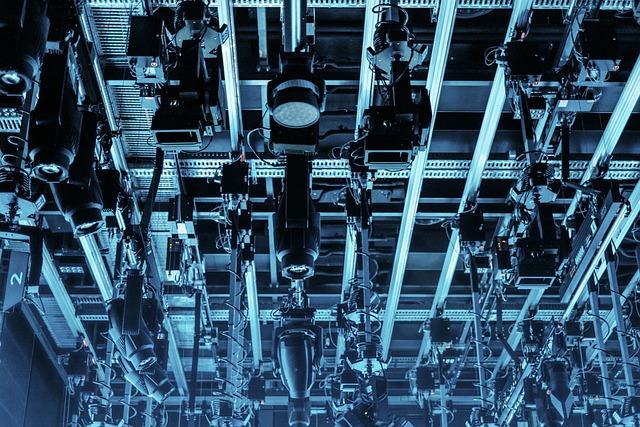As dawn breaks over the bustling streets of Pakistan, a nation rich in history and potential stands at a crossroads. The roads that weave through its landscapes tell stories of both ambition and struggle, each crack and pothole a reminder of the inherent challenges in a rapidly evolving world. Yet, amid these challenges lies a profound opportunity: the chance to revamp Pakistan’s infrastructure. This journey of renewal is not merely about concrete and steel; it is a mosaic of intertwined facets including economic growth, urban development, and social equity. By exploring innovative pathways to progress, this article delves into the vital role that a modernized infrastructure can play in propelling Pakistan toward a brighter, more connected future. Here, we will examine the current landscape, envision the transformative potential ahead, and outline strategies that could pave the way for sustainable development, ensuring that every citizen can benefit from the nation’s resurgence. Join us as we navigate the corridors of possibility in a quest for resilience and renewal.
Fostering Sustainable Urban Development through Smart City Initiatives
In an age where urbanization is accelerating at an unprecedented pace, cities around the world are exploring innovative pathways to enhance livability, sustainability, and economic resilience. Smart city initiatives serve as a beacon for organizations striving to build a more sustainable urban ecosystem. By integrating technology and data analytics, these initiatives can help optimize resource management and significantly reduce environmental footprints. Some essential components driving these transformations include:
- Energy-efficient infrastructure: Incorporating renewable energy sources and sustainable building materials.
- Intelligent transportation systems: Utilizing real-time traffic data to minimize congestion and emissions.
- Waste management innovations: Implementing smart bins that monitor waste levels and facilitate better recycling practices.
- Community engagement platforms: Enabling citizens to participate actively in urban planning through feedback systems.
To visualize the potential benefits of smart city initiatives, consider the following table that highlights key metrics related to urban sustainability:
| Metric | Before Smart Initiatives | After Smart Initiatives |
|---|---|---|
| Carbon Emissions (tonnes/year) | 500,000 | 300,000 |
| Energy Consumption (kWh/year) | 1,200,000 | 800,000 |
| Public Transport Ridership (%) | 40% | 65% |
| Waste Recycling Rate (%) | 20% | 50% |
These transformative outcomes not only pave the way for more resilient urban infrastructures but also foster a culture of innovation among citizens and local governments alike. By prioritizing interconnectedness and sustainability, the journey toward a smarter, greener future becomes not just possible but imperative.

Revitalizing Transportation Networks for Enhanced Connectivity and Efficiency
As urban populations surge and economic activities intensify, the need for robust transportation networks has never been more critical. Revitalizing these networks can lead to improved connectivity, facilitating smoother movement of people and goods. Investing in multimodal transportation options, such as buses, trains, and cycling paths, can ease congestion and reduce travel times. By embracing innovative technologies like smart traffic management systems and real-time monitoring applications, cities can optimize flow and enhance the user experience. Additionally, integrating pedestrian walkways and green spaces into urban planning contributes not only to safety and aesthetics but also promotes healthier lifestyles.
To achieve a significant transformation, the government and private sector must collaborate to examine existing transportation frameworks and identify areas for enhancement. Potential actions include:
- Upgrading Existing Infrastructure: Maintenance and expansion of roads and railways to accommodate growing traffic demands.
- Implementing Sustainability Initiatives: Promoting electric and hybrid vehicles and developing charging infrastructure.
- Encouraging Public Transport Use: Establishing affordable and reliable public transport systems to reduce the reliance on personal vehicles.
In addition, a centralized online platform could streamline information sharing and ticketing across different transport modes. This approach not only simplifies the commuting process but also enhances passenger satisfaction, making public transportation a preferred choice for many.

Harnessing Technological Advancements to Modernize Infrastructure
As Pakistan grapples with the challenges of outdated infrastructure, embracing cutting-edge technologies emerges as a pivotal strategy for transformation. With smart city initiatives at the forefront, the integration of Internet of Things (IoT) devices can enhance urban management, ensuring efficient resource use and improving living conditions. The deployment of drone technology for surveying and monitoring allows for precise data collection, facilitating informed decision-making. Furthermore, leveraging big data analytics enables authorities to predict infrastructure wear and optimize maintenance schedules, thereby extending the lifespan of critical assets.
To capitalize on these technological advancements, it is crucial to foster a partnership between government, private sector, and tech innovators. The establishment of innovation hubs centered on infrastructure development can stimulate local entrepreneurship and attract global expertise. Moreover, investing in renewable energy solutions, such as solar and wind, not only supports sustainable infrastructure but also reduces reliance on conventional energy sources. The following table outlines key technological interventions for infrastructure modernization in Pakistan:
| Technology | Application | Benefits |
|---|---|---|
| IoT Sensors | Smart Traffic Management | Reduced congestion, lower emissions |
| Big Data | Maintenance Forecasting | Cost savings, improved service quality |
| Drone Technology | Infrastructure Inspection | Safety enhancements, real-time insights |
| Solar Energy | Powering Public Facilities | Sustainability, energy independence |

Promoting Public-Private Partnerships to Drive Investment and Innovation
Public-private partnerships (PPPs) hold immense potential to rejuvenate Pakistan’s infrastructure landscape, facilitating a blend of investment and innovation that can drive sustained economic growth. By leveraging the strengths of both sectors, PPPs can deliver state-of-the-art infrastructure that meets the country’s ever-evolving needs. Key advantages of PPPs include:
- Resource Optimization: Combining public oversight with private efficiency ensures better resource management.
- Accelerated Project Delivery: Streamlining processes through shared expertise can significantly reduce project timelines.
- Innovation Stimulation: Private entities often introduce cutting-edge technologies and practices that enhance project lifecycles.
To operationalize effective public-private collaborations, the government must create a robust framework that encourages investment while safeguarding public interests. Transparency in bidding processes, clear contractual obligations, and strong regulatory oversight are vital components. Furthermore, fostering an environment that encourages private entities to bring forward their ideas and solutions can yield innovative approaches to infrastructure challenges. A strategic focus can be organized as follows:
| Strategic Focus Areas | Description |
|---|---|
| Incentives for Investment | Tax breaks and subsidies for companies investing in infrastructure. |
| Capacity Building | Training programs to enhance public sector skills in managing partnerships. |
| Community Engagement | Involving local communities in the planning and implementation processes. |
In Retrospect
As we stand on the precipice of change, the quest to revamp Pakistan’s infrastructure emerges as a beacon of hope for a nation striving to realize its full potential. The pathways we choose in this endeavor will not only shape the landscape of our cities and rural heartlands but will also carve a new narrative for generations to come. By fostering collaboration between the government, private sectors, and communities, we can transform ambitious plans into tangible realities.
Through a commitment to innovation, sustainability, and inclusivity, Pakistan can build a resilient infrastructure that not only addresses the immediate needs of its population but also positions itself favorably on the global stage. Let this journey be marked by shared responsibility and visionary leadership, where every brick laid and every road paved serves as a testament to our collective ambition for progress.
As we look ahead, it is essential to remember that great infrastructure can act as the veins of a nation—vibrant and life-sustaining. It is now up to us to ensure that these veins are strengthened, revitalized, and expanded. The road to progress is long, but together, we have the capacity to travel it with purpose, turning possibility into reality, and dreams into action. With determination and unity, Pakistan can indeed pave the way to a brighter, more prosperous future.



